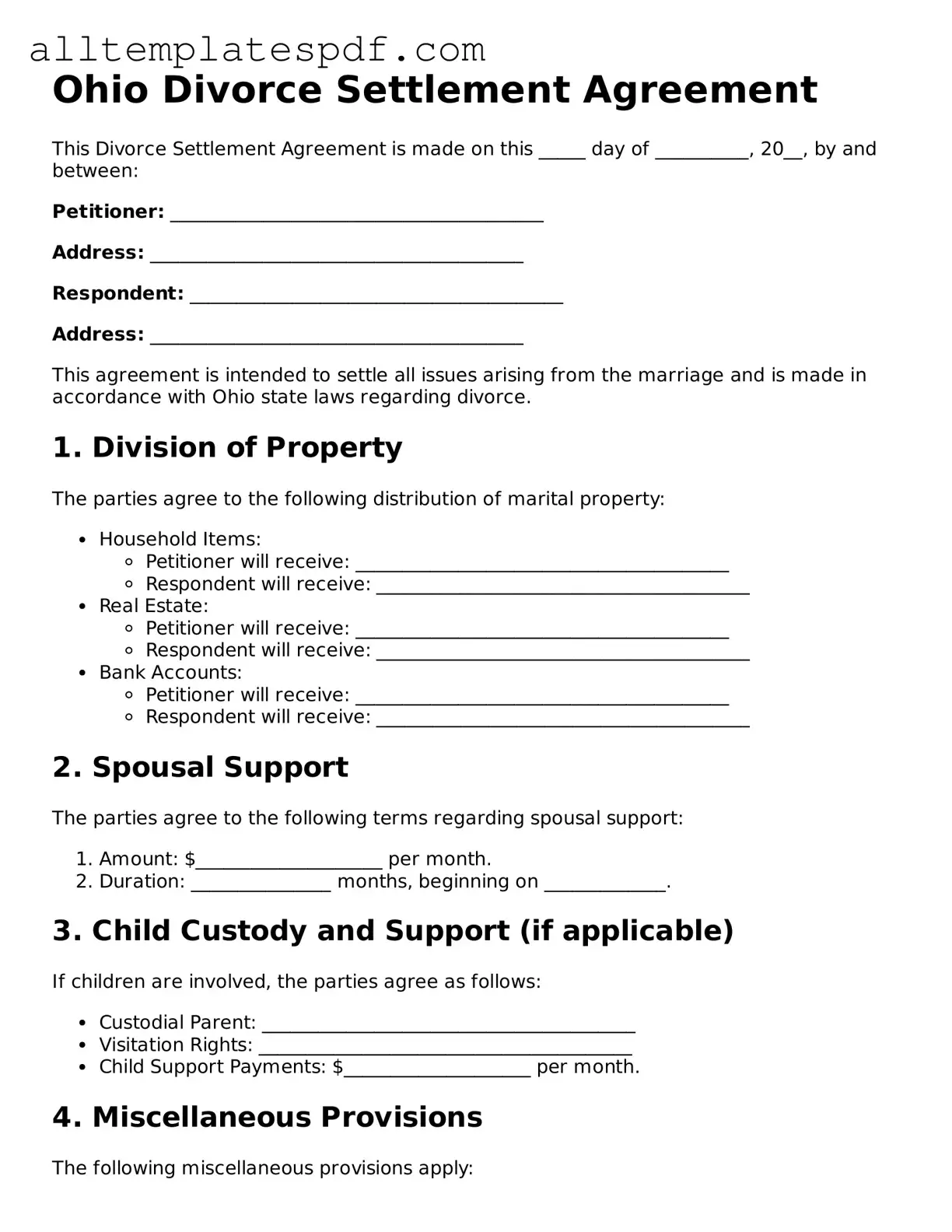Filling out the Ohio Divorce Settlement Agreement form can be a daunting task. Many individuals find themselves making common mistakes that can lead to delays or complications in the divorce process. Understanding these pitfalls can help ensure a smoother experience.
One frequent error is incomplete information. When individuals fail to provide all necessary details, it can lead to confusion and additional paperwork. It's essential to double-check that every section is filled out accurately, including names, addresses, and financial information.
Another common mistake involves misunderstanding financial disclosures. The form requires a full disclosure of assets and debts. Omitting any financial information, whether intentionally or unintentionally, can have serious consequences. Ensure that all bank accounts, properties, and liabilities are accounted for to avoid future disputes.
People often overlook the importance of clarity in custody arrangements. If children are involved, it’s crucial to outline custody and visitation schedules clearly. Vague language can lead to misunderstandings and conflicts down the line. Be specific about the time each parent will spend with the children and any arrangements for holidays or special occasions.
Another mistake is failing to consider tax implications. Divorce can significantly affect your tax situation. Individuals sometimes forget to discuss how assets will be divided in a way that is tax-efficient. Consulting a financial advisor can provide insights into how to handle these matters effectively.
Additionally, many people neglect to review the agreement thoroughly before signing. Rushing through the process can lead to overlooking critical details. Taking the time to read through the entire document ensures that all terms are understood and agreed upon, preventing future disputes.
Lastly, individuals may underestimate the importance of seeking legal advice. While it’s possible to fill out the form without a lawyer, having legal guidance can help navigate complex issues. A knowledgeable attorney can provide valuable insights and help avoid mistakes that could affect the outcome of the divorce.
By being aware of these common mistakes, individuals can approach the Ohio Divorce Settlement Agreement form with greater confidence. Taking the time to ensure accuracy and clarity can lead to a more favorable and efficient divorce process.
